Temperature curve and clock rates
The warm-up phase of both cards could not be more different, but the final result of both cards is very similar. In no case will the temperature rise above 65 or 66 °C. The passive card reaches the final value of 66°C in the gaming loop only after about 24 minutes. Then the takrates of both cards are also at an average value of approx. 1.6 GHz almost concoincidently on top of each other.
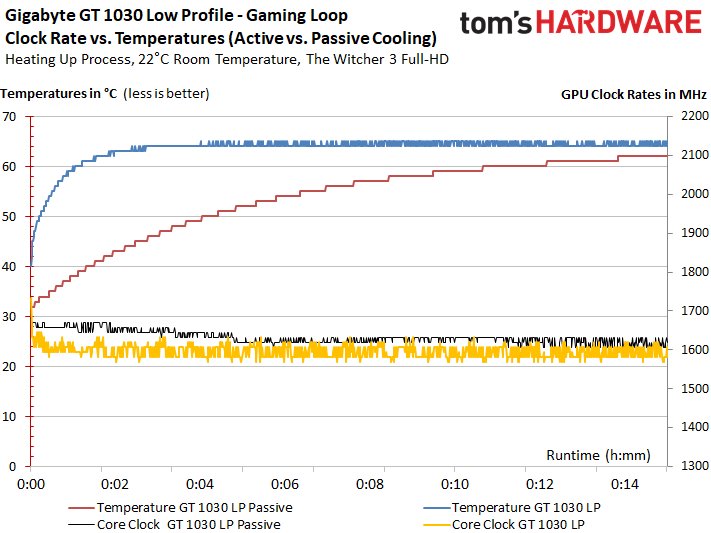
In the Torture test, the passive card reaches the final value of 67°C after about 20 minutes, which is due not to the GPU, but to the refrigerated voltage converters. The actively cooled card is a tick cooler at 64°C, because the clock for both cards is also lower overall than just with the gaming loop and the fan suddenly turns up.
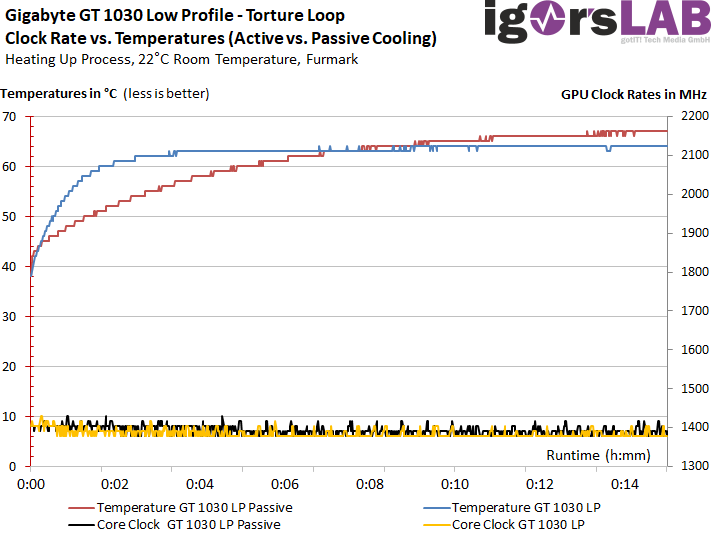
Infrared analysis of board temperatures
Let's first look at the temperatures of the actively cooled map. With the gaming loop, the uncooled voltage converters are still up to 86°C hot, which is not nice, but just acceptable. The 65°C for the GPU is similar to the preset temperature target.
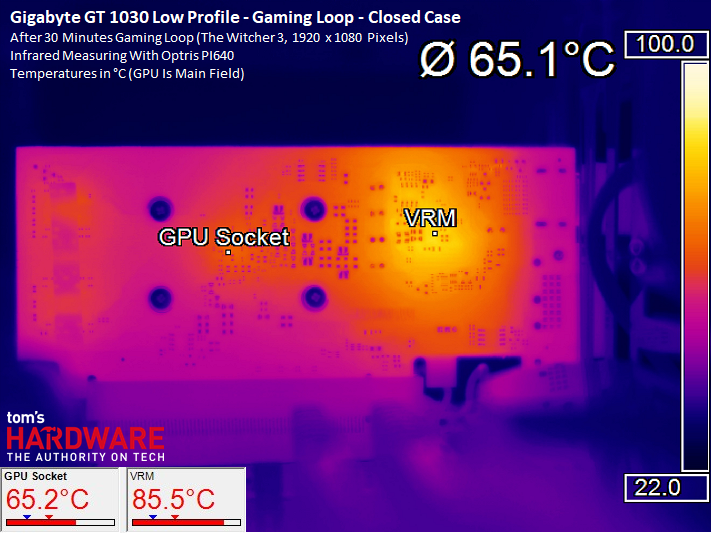
In the Torture loop, the currents and thus also the speeds of the fan rise directly. This leads to a temperature of only 64°C for the small GPU, but the voltage converters are already almost 89°C hot. Gigabyte did well to put two phases in the end, even if it wouldn't have been necessary for electrical reasons.
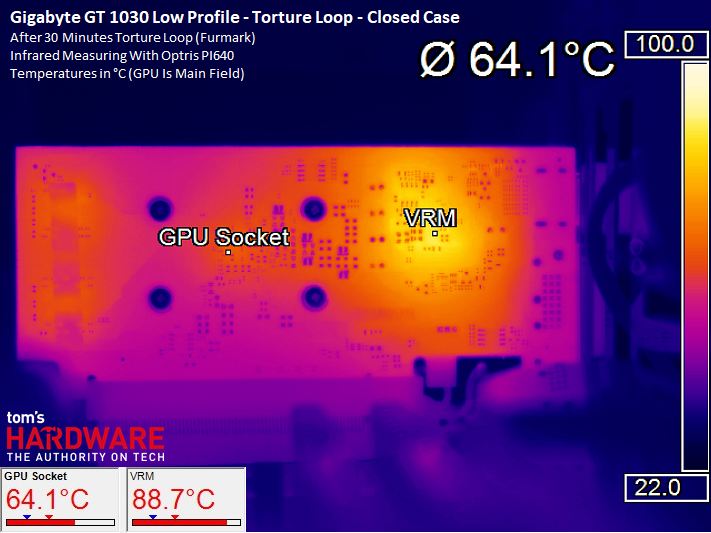
With the passive map, we see for the GPU the above mentioned final temperature of 66°C in the gaming loop, which no longer fit into the diagram. But this is neither critical nor dramatic, because the voltage converters do not even have 74°C! Here, the direct cooling of the VRM pays off completely.
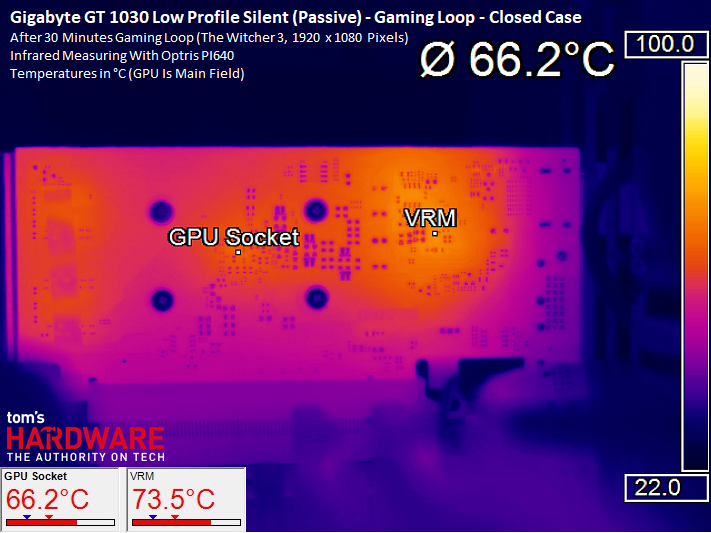
Also the three Kelvin higher GPU temperature in the Torture loop is to be put into perspective, because the voltage converters are almost 11 Kelvin cooler than with the active test pattern in the same situation!
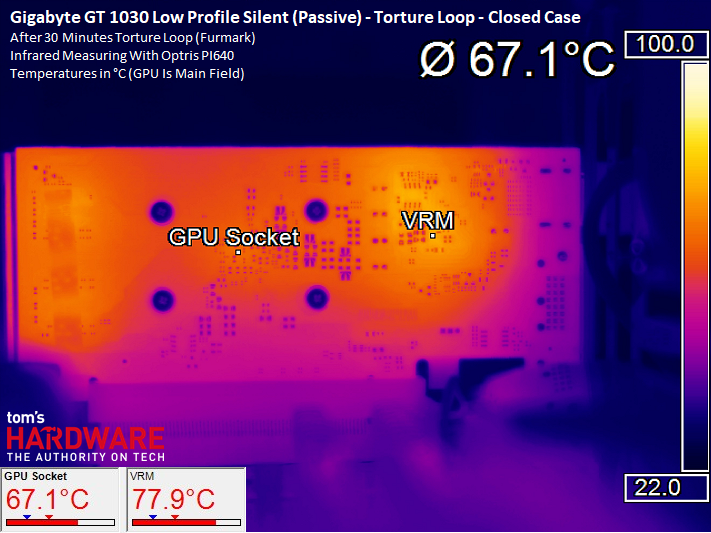
Thus, the passive cooling surprisingly also offers the better cooling performance, with a certain draught in the room or have done all the work of self-convection. At such room temperatures we ours, the passively cooled map is clearly the better choice!
Fan speeds and noise emission
The trick is that we can't measure anything for the passive card. Even the two coils remain persistently silent. However, the little sausebraus on the active card is constantly in motion, even in the idle. There is no semi-passive mode. There are always approx. 1800 to 1900 rpm, depending on background activity.
But we see very nicely that the fan jumped on the gaming loop immediately and at the Torture Loop only a little later. Unfortunately, it was not possible to find out why this is the case in the end, but it was reproducible.
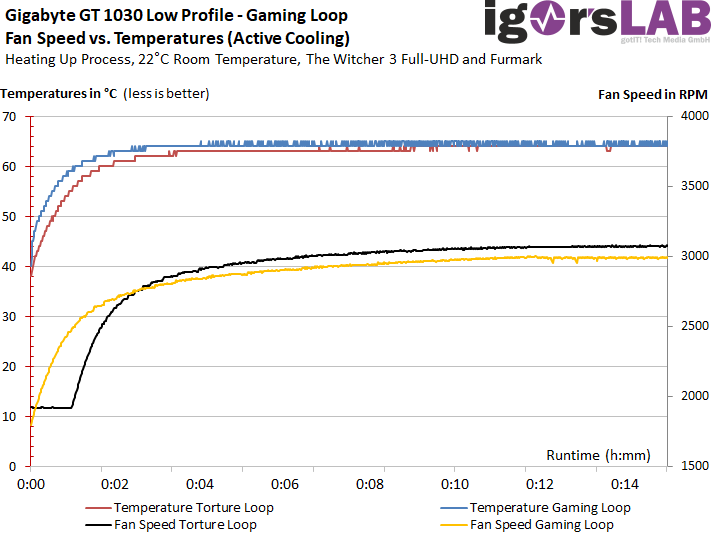
Due to the low noise emission, this time we have focused on the sound spectrum, because one can only safely analyze what is also demonstrably present. Despite the absence of semi-passive mode, only 28.7 dB(A) are displayed on the display of the measuring software, and under full load it is 31.6 dB(A). This allows the card to be extremely quiet, although not as completely inaudible as the passive card.

































Kommentieren